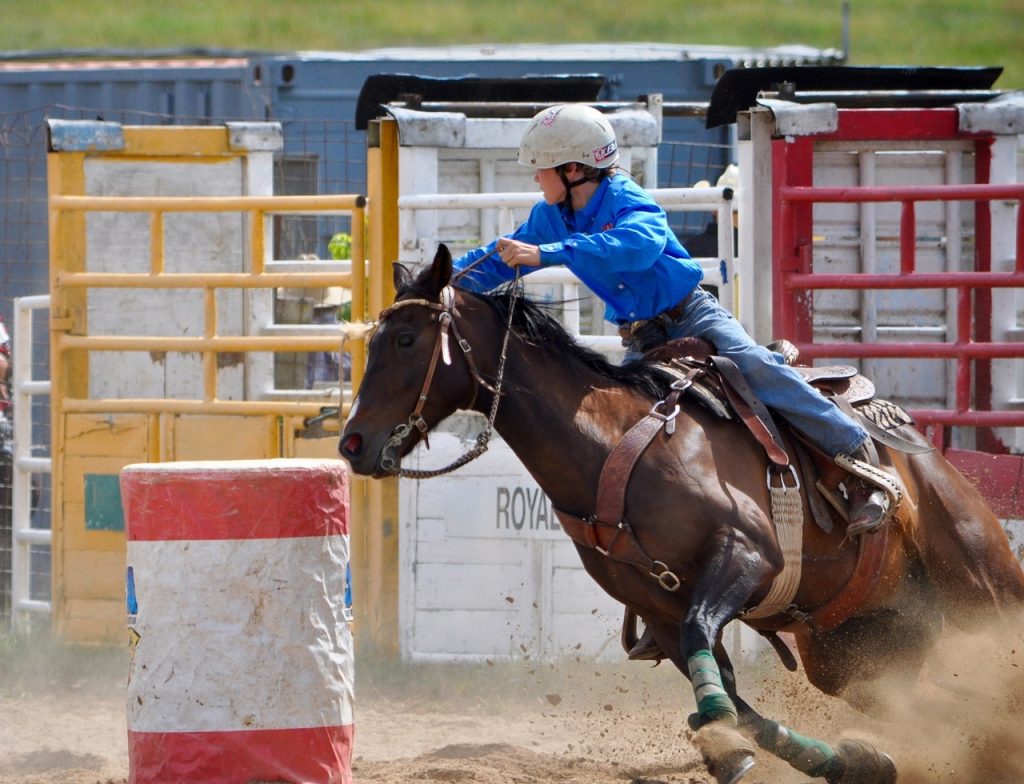Tuesdays with Tony
Show season is in full swing and my docs have been super busy getting your horses ready to perform their very best. Now that you and your horse have been competing for a few weeks, it might be time to have them looked at again. When your horse is competing, they are under a significant amount of stress; their normal routine is altered, they are being ridden multiple times a day, and they’re pouring their hearts into their work for you. Competitions can take a toll on your horse. Thank goodness there aren’t cat shows, that seems like way too much work for this cat.
Now that you’ve been competing for a few weeks, maybe you’ve started to notice your horse is just a tad late with his lead change, or he isn’t quite jumping the same as he was at the start of season, or that push off the last barrel just isn’t quite as strong. You’ve heard competitors talking about joint injections and how they have improved their horse’s performance and you’re thinking, maybe it’s time for my horse to get his joints injected. Joint injections are not without their risks, so luckily for you, I am here to talk about the pros, the cons and everything in between on joint injections.
The Exam
You think your horse needs some joints injections, so you schedule an appointment with one of my docs. Before my docs go all willy-nilly injecting joints, they will require a lameness examination. You’re probably thinking, but my horse isn’t lame, he’s just not as good as he usually is. And you’re probably right, your horse probably isn’t lame, but a full lameness examination will allow for my docs to determine if your horse even needs injections and if they do, which joints should be injected. They put their expert hands on your horse and feel their muscles, their joints, and their tendons and ligaments to determine where the source of pain might be. They watch your horse move at the walk and trot on different terrains and in different directions. They may even perform some joint flexions. Based on their examination they can then determine if your horse needs joint injections or if further diagnostics are necessary.
Diagnostics
After a thorough lameness examination is performed, diagnostics such as radiographs and/or ultrasound may be recommended. If my docs recommend radiographs, they may be looking for hoof abnormalities such as toe length, coffin bone angles, or navicular changes. They will also assess the radiographs for evidence of arthritis which can lead to inflammation and decreased performance. Ultrasound can be used to assess tendons and ligaments for inflammation, small tears, or other areas of concern. My docs can also use ultrasound to assess joints capsules for inflammation, infection, and arthritis. While radiographs and ultrasound may not be necessary to treat your horse, they are extremely useful to locate precise areas of concern.
The Injections
Now that a lameness examination and diagnostic imaging have been completed, my docs can determine if your horse needs injections and what joints need to be injected. They will also determine what will be best to inject your horse’s joints with. There are several different options for joint injections including steroids, hyaluronic acid, and platelet rich plasma (PRP). Steroids help to decrease inflammation in joints. Hyaluronic acid can be used to help lubricate the joint. Platelet rich plasma brings a large number of growth factors to the joint which helps to stimulate production of repair tissue. Depending on your horse’s lameness exam, my docs will decide which medication or combination of medications to inject into your horse’s joint(s). My docs choose which product, and how much, very, very carefully. Steroids cost less in dollars, but can cost way more in side effects. For instance, steroids injected into joints can cause laminitis, even if the joint is really far from the feet. This side effect is particularly worrisome if your horse’s weight tends towards the pudgy like mine. Steroids also don’t heal the joint at all. They do reduce inflammation, but they also bring calcium to the soft tissues around the joint. Calcium in your very soft, flexible joint capsule is, shall we say, less than ideal, and it hurts. This side effect often happens after repeated steroid injections, and can be a cause for retirement. Platelet rich plasma and hyaluronic acid don’t carry these concerns, but every time a needle is placed in a joint there is a very small amount of damage done. That damage needs to be less than that being caused by the inflammation present.

Joint injections are considered an invasive procedure. My docs take special care when performing joint injections which includes sedating your horse as well as sterile preparation of the injection site. Prior to injecting, my docs will have their technician place a twitch on your horse’s upper lip. They tell me that the placement of the twitch actually helps to release endorphins and helps relax your horse. Maybe so, but I sure don’t want to find out if that is true. I’ll keep my lips to myself thank you very much. While your horse’s joints are being prepared for injection, my docs will pull up the medication for the joint in a sterile fashion. They also may add in a small amount of antibiotic to help reduce the risk of joint infections. Often times they will administer a dose of bute to help decrease the inflammation that is a result of the injection. Finally, they will leave you with specific instructions for your horse going forward, including stall rest the day of injection, usually turn out the day following injection, and then light work for a few days. They will also instruct you to monitor your horse for any pain, swelling, redness, or lameness in that limb that was injected. They will tell you to call us immediately if you notice any of those signs.
The goal after joint injections is to decrease the inflammation in the joints to help your horse return to peak performance. However, joint injections cannot and should not be performed any time your horse has a decrease in performance. Instead, joint injections should be accompanied by physical therapy and a strict exercise program to boost your horse’s fitness level and keep your horse sound longer.
Physical Therapy
My clinic is a one-stop-shop for all your horse’s needs. If my docs recommend physical therapy, I can offer that as well. We have the functional electrical stimulation (FES) which we use to help retrain your horse’s muscles to work in the correct way. It helps to relieve muscle spasms, treats muscle atrophy, and overall strength of your horse’s muscles. We also have two very new offerings coming your way in Spring 2020: Springhill Equine is excited to offer acupuncture and spinal manipulation (chiropractic) treatments for your horse! Get excited, I know I am! I think I could use some acupuncture. You know, sleeping all day results in some very sore muscles for this old cat.
If you think your horse might have some performance issues, give me a call at the clinic and I will get you scheduled for a lameness workup. My docs can answer your questions and help you make the best choices for your horse, both for today and down the road.
Until next week,
~Tony
P.S. If you want to learn more about joint injections, my docs did a podcast on this topic a while back. They go very in-depth, which I don’t really have the energy for, but if you want to advance a few knowledge levels on joints, that’s the podcast for you. Click here, and scroll down the list until you get to the one called Joint Injections. You can listen to it right from your phone or computer.
Tuesdays with Tony is the official blog of Tony the Clinic Cat at Springhill Equine Veterinary Clinic in Newberry, Florida. If you liked this blog, please subscribe below, and share it with your friends on social media! For more information, please call us at (352) 472-1620, visit our website at SpringhillEquine.com, or follow us on Facebook!
[jetpack_subscription_form title="Subscribe to Whinny's Wisdoms"]

